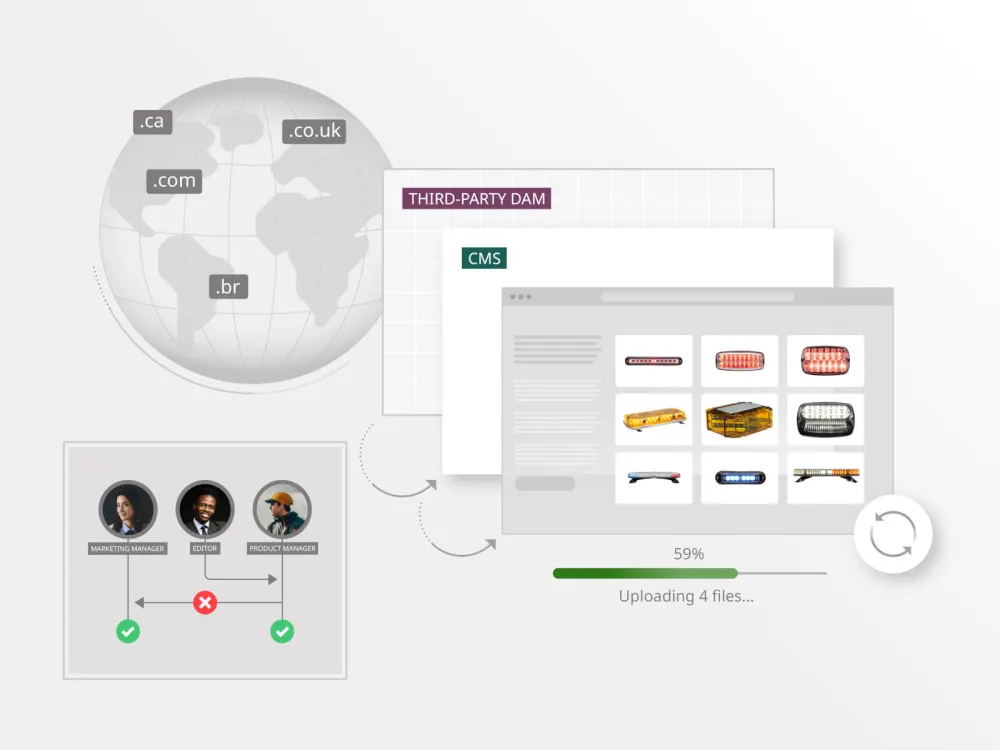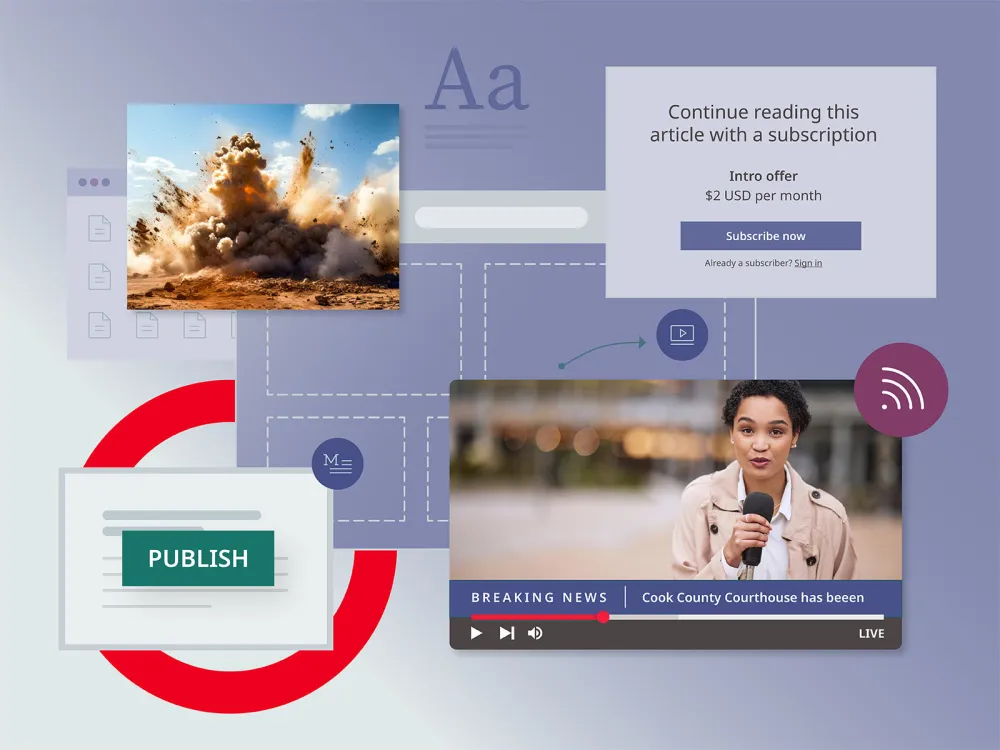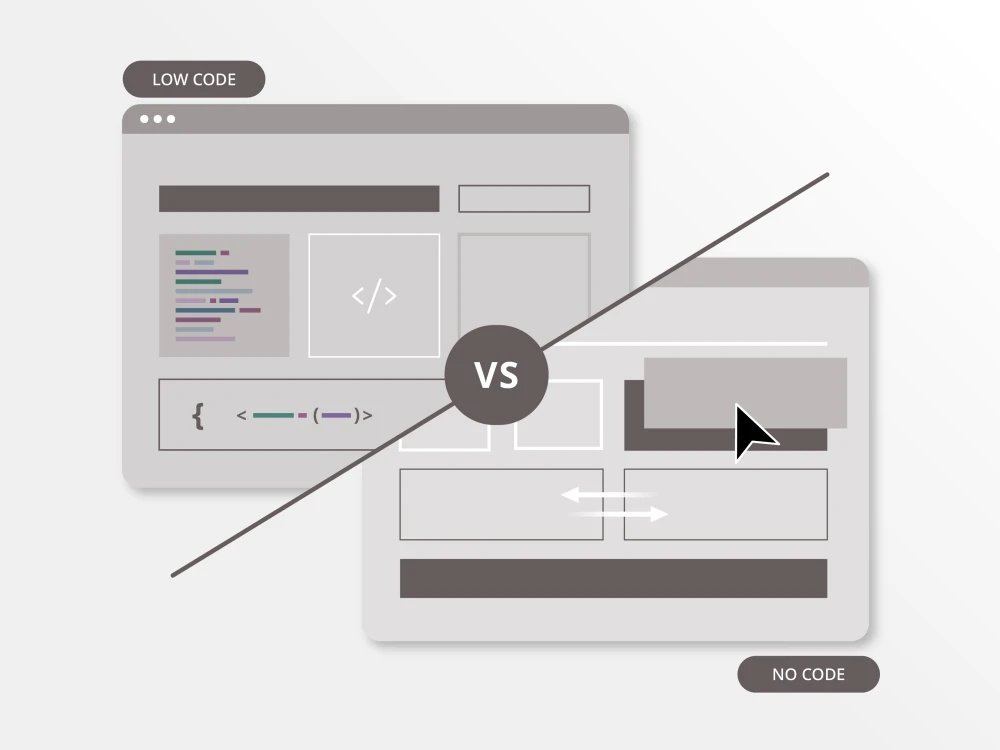Microsoft’s SharePoint has long been a popular choice for document management within the enterprise, particularly for organizations deeply invested in the Microsoft ecosystem. However, as businesses pivot toward more advanced and integrated digital content strategies, SharePoint often struggles to meet the requirements of a modern content management system (CMS). For organizations seeking a robust alternative to SharePoint, Brightspot CMS emerges as the superior choice with its flexible architecture, advanced capabilities and seamless integration with various digital tools.
This article explores the limitations of SharePoint as a CMS and highlights why Brightspot CMS is a future-ready solution for enterprise content needs.
SharePoint as a CMS: Document management vs. content management
SharePoint excels at document storage, file sharing and collaboration — functions it was originally designed to perform. Its integration with tools like Microsoft Office makes it invaluable for managing documents in teams and workflows. However, SharePoint as a CMS presents challenges, particularly for enterprises with diverse digital needs. Here’s why:
- Limited content management features: SharePoint lacks robust features for managing dynamic content like blogs, multimedia galleries and e-commerce catalogs.
- Rigid architecture: SharePoint often requires heavy customization to support content publishing workflows or multiple sites.
- Insufficient multi-channel support: Delivering consistent, engaging experiences across websites, apps and other digital channels is cumbersome with SharePoint.
- Complexity and maintenance: Using SharePoint for advanced content management typically demands extensive IT resources, making it less efficient for non-technical users.
Enterprises using SharePoint as a CMS often face scalability roadblocks and reduced agility — two critical factors for success in today’s digital-first business environment.
Why Brightspot CMS is the ideal alternative to SharePoint
Brightspot CMS is designed to address the exact challenges that limit SharePoint as a CMS, offering a modern, adaptable platform for enterprise content management.
Below are the key areas where Brightspot outshines SharePoint:
Flexibility for diverse content needs
Unlike SharePoint, Brightspot CMS is built with flexibility at its core. It provides an intuitive interface for managing all content types, from simple text-based articles to complex multimedia libraries. Brightspot supports:
- Rich multimedia experiences with native video and image management
- Multisite management for organizations running multiple brands or regions
- Quick adaptability for different industries, from news and publishing to e-commerce
With Brightspot, businesses can manage content workflows seamlessly without needing extensive customizations or plug-ins, making it a hassle-free alternative to SharePoint.
Streamlined workflows and collaboration
Brightspot CMS offers advanced workflows that allow teams to streamline the entire content lifecycle. Whether your organization requires:
- Role-based approvals
- Complex multi-departmental collaboration
- Content scheduling and versioning
Brightspot supports these needs out of the box, enabling teams to maintain efficiency and accuracy. While SharePoint’s workflows are primarily geared toward document approvals, Brightspot’s workflow capabilities extend far beyond, empowering enterprises to tailor workflows to their specific requirements.
Enhanced personalization and engagement
In the age of hyper-personalization, delivering tailored content to different audience segments is crucial. Brightspot’s built-in AI and machine learning capabilities allow organizations to:
- Automate content recommendations based on user behavior
- Deliver dynamic, personalized experiences across multiple channels
- Adapt content strategies in real time
SharePoint as a CMS falls short here, as it lacks robust personalization tools, leaving businesses with generic and static digital experiences.
Seamless integration across the digital ecosystem
While SharePoint integrates well within Microsoft’s suite of tools, its support for third-party integrations is limited. Brightspot CMS takes an API-first approach, enabling seamless integration with:
- Customer relationship management (CRM) systems like Salesforce
- Marketing automation tools like HubSpot and Marketo
- Analytics platforms, e-commerce platforms and more
This extensive integration capability allows enterprises to build a cohesive digital ecosystem, ensuring smooth data flow and operational efficiency.
Scalability for enterprise growth
Brightspot’s cloud-first, modular architecture ensures that enterprises can scale their content operations effortlessly. Whether managing a single microsite or a global network of hundreds of sites, Brightspot handles growth with ease. In contrast, SharePoint’s scalability often requires significant IT investment and on-premises infrastructure adjustments, making it less cost-effective as businesses expand.
Choosing Brightspot CMS as your alternative to SharePoint
For enterprises evaluating SharePoint as a CMS, it’s essential to understand its limitations in delivering a modern, scalable content management solution. While SharePoint is a reliable tool for document collaboration, its inflexibility and lack of advanced features make it less suitable for organizations aiming to drive digital transformation.
Brightspot CMS offers:
- A purpose-built platform for enterprise content management
- Out-of-the-box workflows and personalization tools
- Seamless integration across diverse tools and platforms
- Superior scalability to meet the demands of growing businesses
By choosing Brightspot CMS as an alternative to SharePoint, enterprises unlock a future-ready solution designed to enhance efficiency, improve customer engagement and drive business success.
If you’re looking for a content management system with enterprise-level features and functionality, you may have considered SharePoint as a potential solution. Launched in 2001, Microsoft SharePoint is a web-based collaboration and document management system. Organizations can install, deploy and manage SharePoint Server on-premises or with an Office 365 Enterprise subscription. Businesses may also use SharePoint within Microsoft 365. With this Microsoft-hosted, cloud-based service, you can subscribe to a Microsoft 365 plan or the standalone SharePoint Online service. SharePoint is often called the “Swiss Army knife” of IT teams because it can be used to create websites, store information and much more.
Yes, SharePoint can function as a content management system (CMS), but it is primarily designed for document management and collaboration within the Microsoft ecosystem. While it does have CMS capabilities, particularly for managing and organizing documents, intranets and some web content, SharePoint is not a full-featured CMS in the way that platforms like Brightspot or WordPress are. SharePoint excels at document management, version control, workflows and integration with Microsoft Office products, making it ideal for organizations that prioritize internal collaboration and file sharing. However, its flexibility and usability as a comprehensive CMS — especially for managing diverse types of web content, delivering dynamic digital experiences and integrating with non-Microsoft tools — are limited compared to more specialized CMS platforms. For businesses seeking advanced web content management, scalability, and integration with a wider range of digital tools, SharePoint may not meet all needs, and other CMS solutions like Brightspot are often better suited for those demands.










